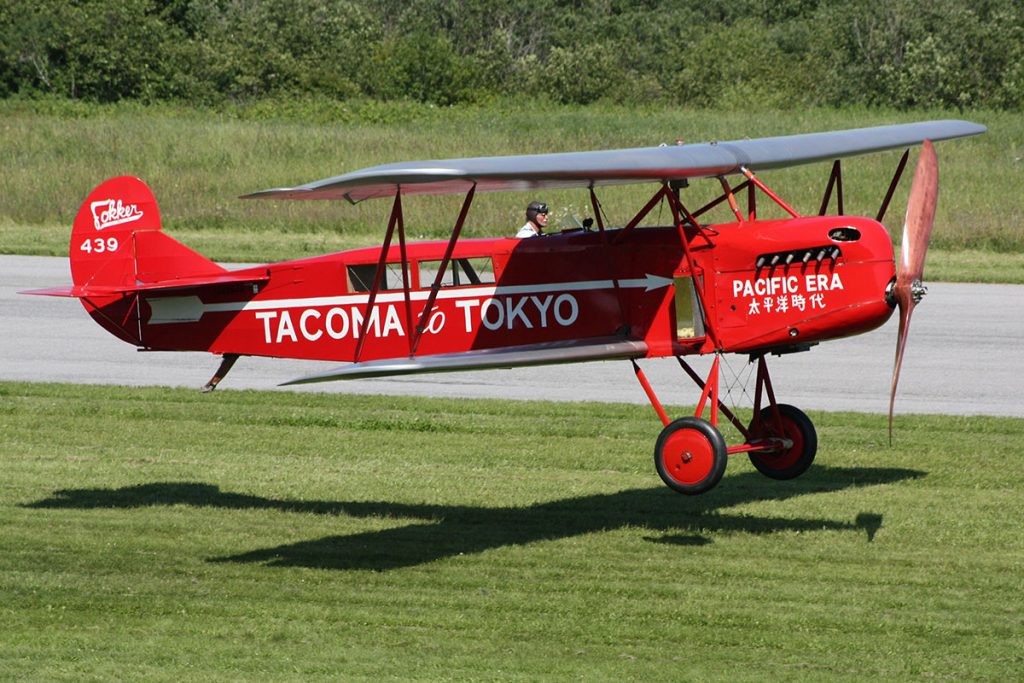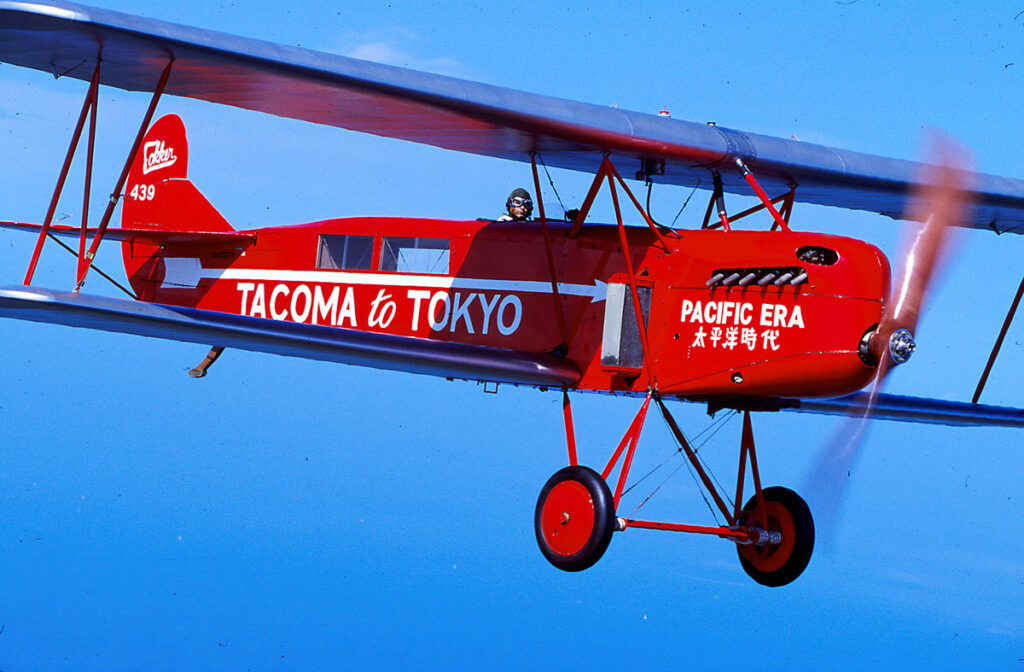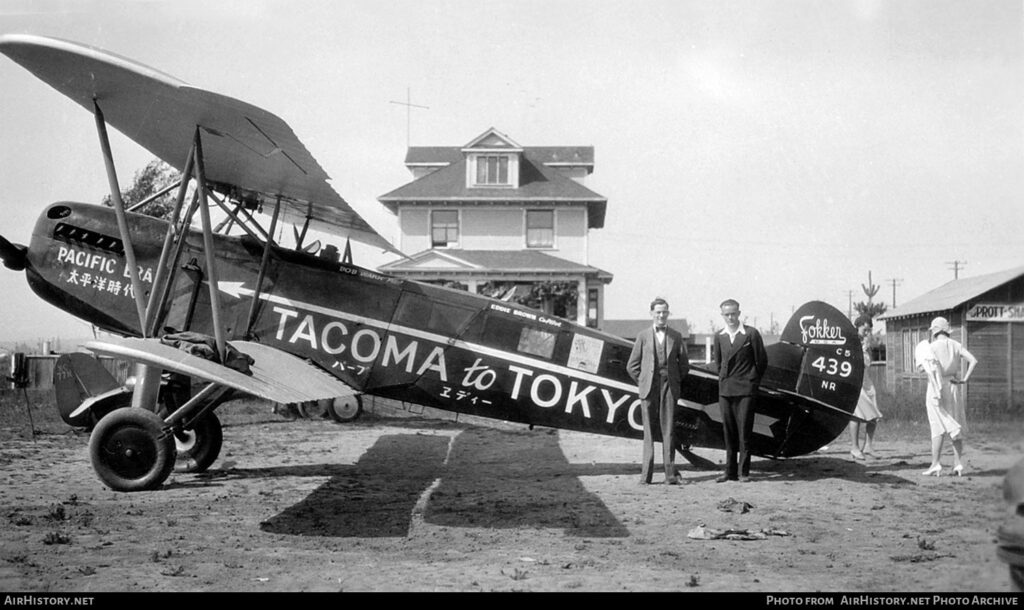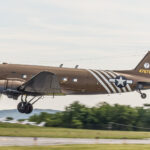When Anthony Fokker designed the C.IV in 1923, he intended for the final product to be adapted to each customer’s needs. For the one fuselage, he designed several different types of wings to be matched to different engines on the market. Over the next two years, almost 200 C.IVs were produced and sold to countries around the world, including the United States, the USSR, Spain, and Norway.
None of these plans came to fruition until 1930 when Bob Wark and Eddie Brown adapted the Fokker to fly from Tacoma, Washington to Tokyo, Japan to win a $25,000 prize. Their primary change was replacing the wicker chairs with a 450-gallon fuel tank. Even with this addition, they planned multiple midair refuelings to cover the 5,400-mile distance.
On August 10, 1930, Wark and Brown took off from Tacoma, but encountered trouble less than 200 miles into the flight. A problem with the fuel lines forced them to land at a small airfield near Vancouver, B.C. While Wark was able to land safely, the aircraft had too much fuel to takeoff from the small field. He dumped a majority of the fuel and sent Brown by car to meet him at Ladner Field, which was only a few miles away.
Wark managed to safely take off but had more problems at Ladner Field. When trying to land, he overshot the runway, sheared the landing gear off the plane. Instead of repairing the plane there and trying to fly again, the wings were removed and the plane was then driven back to Washington State.
The plane was largely abandoned until the 1970s when Ken Cianchette, a founding trustee at the Owls Head Transportation Museum, discovered it and set about restoring it to flying condition. In 1992, with the restoration nearly complete, Cianchette donated the plane to the Museum and in 1999 made the first flight of the C.IVa in 69 years.
The Owls Head Transportation Museum is a nonprofit educational organization. Its mission is to collect, preserve, exhibit, and operate pre-1940 aircraft, ground vehicles, engines, and related technologies significant to the evolution of transportation for the purpose of education. Home to a world-class operating collection, the Owls Head Transportation Museum (OHTM) features more than 150 antique automobiles, aircraft, motorcycles, bicycles, engines, and more. Located in picturesque Midcoast Maine, the museum offers something for everyone with award-winning exhibits halls, community education programs and a full event season, featuring Wings & Wheels Spectacular and the New England Auto Auction™. For more information, visit www.owlshead.org



























